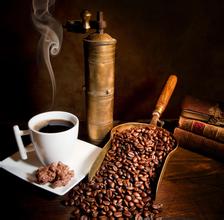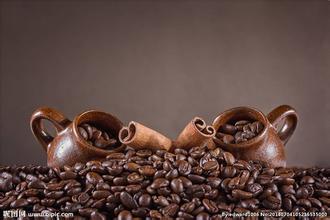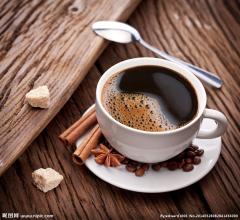Introduction to the export volume of coffee beans from the main producing countries in Latin America
Introduction to the export volume of coffee beans from the main producing countries in Latin America
Once the second largest coffee producer after Brazil, Colombia, which has been overtaken by Vietnam to become the world's largest supplier of washed beans, has become synonymous with good coffee after years of image-building. Despite the balanced flavor, thick texture, famous sour taste and aroma, most Colombian beans are mediocre and have no personality if you taste them carefully. When choosing Colombian beans, you should not only look at the grade marks, but also pay attention to the producing areas, because Colombia is currently graded according to the size of beans, so the Supremo or Excelso on the coffee bag refers to the size of beans rather than the quality, but the size of beans is not necessarily related to the flavor of the entrance, but is closely related to the altitude of the place of origin and taste, so this grading system is often criticized. In fact, most of the medium,
South American countries have switched to altitude classification, and only Colombia maintains this traditional classification system, which many Colombian coffee makers have recognized and have begun to demand a change in the classification system. Colombia's famous producing areas include Medellin, Armenia and Manisales, so the word MAM is sometimes seen on coffee bags, indicating that the coffee beans may come from any of these three producing areas. Almost all of Colombia's finest coffee beans come from traditional small farms, which grow old coffee trees from Typica, which are well planted and carefully harvested and treated, so they are of high quality but relatively low in yield.
Costa Rica (Costa Rica) aroma 3.5 minutes brightness 4.5 minutes mellow 3 minutes flavor 4.5 points aftertaste 4.5 points
Suitable for baking: if Light/Medial/City wants to show the perfectly balanced flavor of Costa Rica, it can never be baked deeply, it is recommended that the degree of City can be done, or even the beans can be added as soon as the first explosion is over, at this time the flavor and flavor will be both, close to the second explosion is the deepest limit of baking, do not enter the second explosion and waste the best coffee beans.
Costa Rican coffee is praised as "complete coffee" by many gourmets, because it is very balanced, the flavor is very clean and tight, the delicate sour taste with green apple (sometimes citrus or plum fruit), the body is tight but not thin, and the sweetness of the coffee will stay in the throat for a long time, so some people describe it as "perfectly balanced"! The best Costa Rican coffee has a chocolate flavor in its aftertaste. There are a total of 130, 000 coffee farms in Costa Rica. The most famous producing areas are Tarrzu, near the southern Pacific coast, and Tres Rios, north of San Jose, the capital. These areas have high altitude and good soil, so they have the densest planting density and stable coffee quality. Among these many coffee farms, the most famous is located in Tarasu. LaMinita Manor, which tastes as clear as a bell, the coffee at LaMinita is so good because it is careful and strict in everything from the planting of coffee trees to the handling of coffee beans. in fact, the estate produces not a small number of coffee beans a year, but very few of them are sold under the name of LaMinita, and the rest are selected to be sold only as beans from the Tarasu region. Because Tarasu is so famous, the fame of other producing areas is less known to the world, such as the Bols volcanic area and the Sanshui River producing area. The three major volcanic areas even produce excellent coffee in Orosi and so on on the north side of the Atlantic Ocean. Another problem with strong brands is that many coffees that are not produced in Tarasu are also mixed with fish eyes and pictures of Tarasu, so it is the only way to try it in person.

Important Notice :
前街咖啡 FrontStreet Coffee has moved to new addredd:
FrontStreet Coffee Address: 315,Donghua East Road,GuangZhou
Tel:020 38364473
- Prev

What's the procedure for opening a coffee shop? What relevant evidence processing procedures should be conducted?
What's the procedure for opening a coffee shop? What are the relevant evidence processing procedures (1) the layout of coffee shops. Whether the area distribution of business, operation and auxiliary parts meets the requirements and whether the layout is reasonable. (2) operating room. The floor and wall of the operation room should be tiled to facilitate erosion, the height of the tile on the wall is generally not less than 1.8m, the kitchen had better be inlaid to the top, and the ceiling should be made of suspended ceiling.
- Next

How coffee alcohol is formed-milk coffee spot formation causes
Coffee alcohol is more effective at raising serum cholesterol than caffeine, and a mixture of caffeine (60 mg/day) and caffeine (51 mg/day) is only slightly better at raising serum cholesterol than pure caffeine (64 mg/day). Due to the difficulty of purification of caffeol and the stability of this diterpene
Related
- What documents do you need to go through to open a coffee shop? coffee shop coffee shop certificate processing process
- How to purchase Coffee beans in small Cafe how to choose a suitable supplier for domestic Coffee supply Company
- How to drink Starbucks Fragrance White Coffee? how to make Australian White Coffee? what Italian coffee beans are recommended?
- The Story of Flora Coffee: the name of Flora Coffee Bean and the implication of the Flowers on Florna Coffee
- How much does a cup of coffee cost? How much is the profit of a cup of coffee? What is the profit of the coffee shop in a year?
- Yunnan small Coffee, known as "fragrant Coffee", introduces the characteristics of Alpine Arabica Coffee producing areas in Yunnan, China
- 2023 latest Starbucks full menu price list how much is a cup of Starbucks coffee what is better to drink the most popular hot and cold drinks recommended
- Starbucks different kinds of Coffee Price list Starbucks menu 2023 Top Ten Best drinks in Starbucks
- Starbucks Spring praise Comprehensive matching Coffee Bean theme Story Packaging implication and taste description
- The cost of a cup of coffee latte American coffee cost price and selling price

